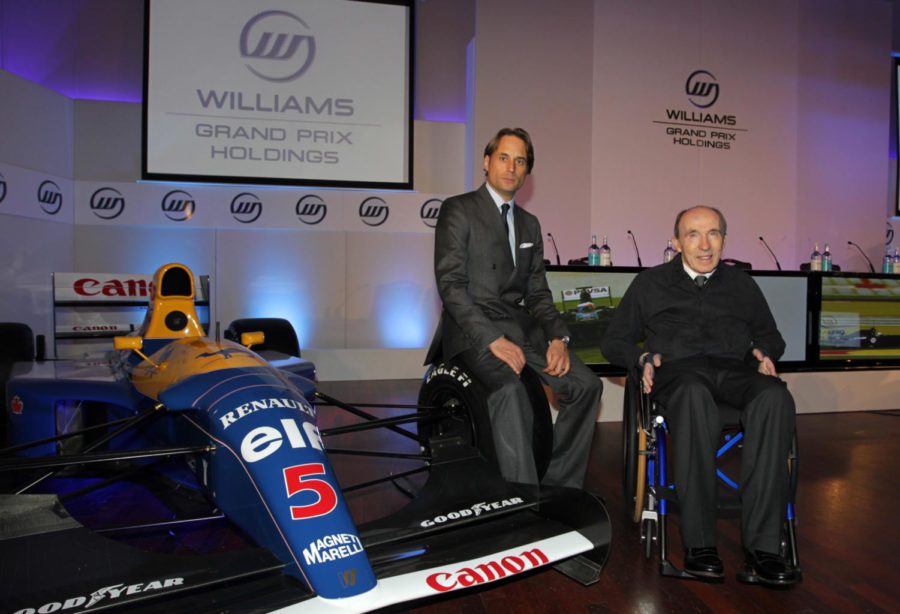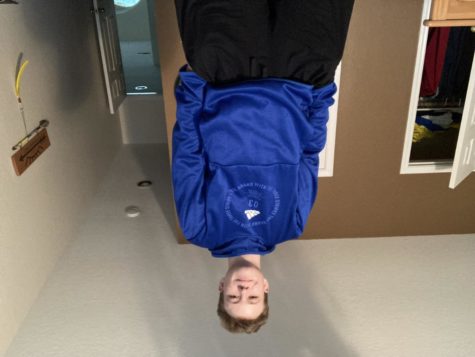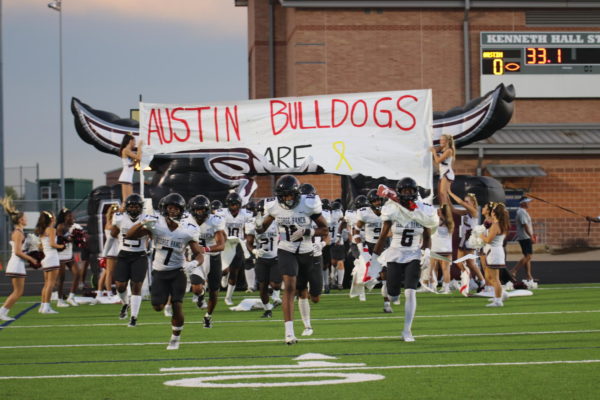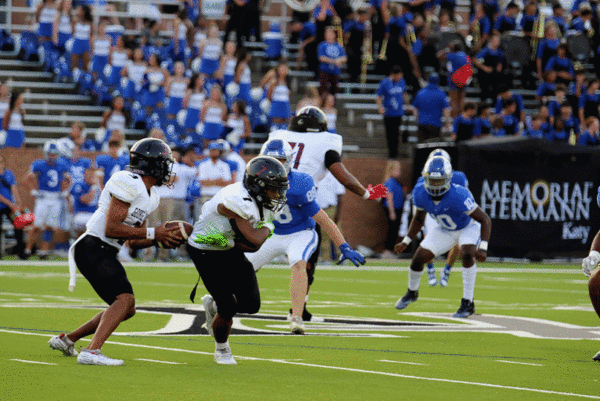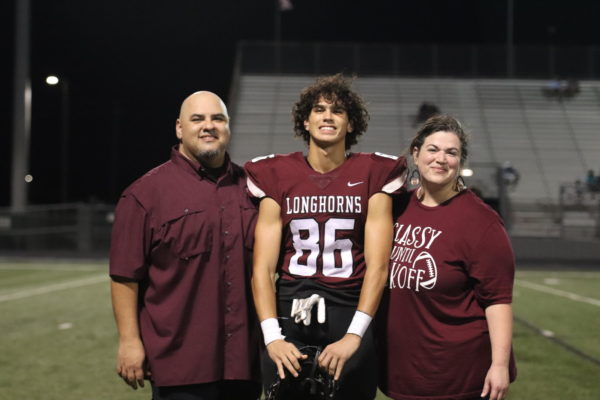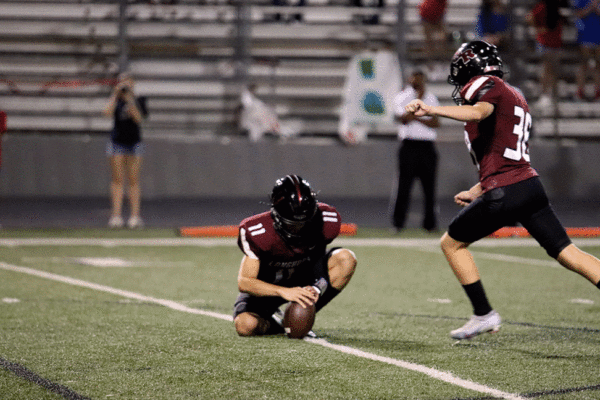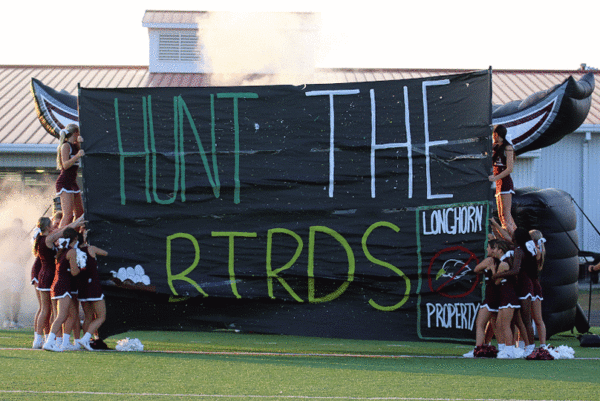Sir Frank Williams: A Legacy of Determination
On November 28, 2021, Sir Frank Williams passed away in a hospital. He remains the longest serving and most successful team principal in Formula 1 history.
LyndseyWF1 https://upload.wikimedia.org/wikipedia/commons/6/64/AdamParr.JPG
Frank Williams (right) next to Nigel Mansell’s 1992 Championship winning car.
January 19, 2022
“Today, we say goodbye to the man who defined our team. Sir Frank was such a genuinely wonderful human being and I’ll always remember the laughs we shared,” said current Williams driver, George Russell, on Twitter.
On November 28 of 2021, Sir Frank Williams was pronounced dead, leaving behind the legacy of being the longest serving F1 team principle, winning seven Driver’s Championships and nine Constructor’s Championships. His love for motorsport started at a very young age, often hitchhiking to Silverstone to watch the cars race around the track.
Sir Frank’s career leaves much to be desired, beginning as a car mechanic for Piers Courage and selling car parts. Sir Frank and Courage eventually formed a team together in 1969 named Frank Williams Racing Cars. The partnership was short lived however, as Courage died almost a year later in a racing incident in Zandvoort, Netherlands.
His tenacity, determination, sheer passion, and joy he gets from F1 are truly inspirational. He’s always been my role model.
— Claire Williams
Sir Frank soldiered on, however, famously being told by his wife to get fish and chips but coming back with spark plugs. The team, however, suffered from financial issues due to a lack of sponsors and in 1976 the team folded.
This was not the end for Sir Frank’s ambitions, as he teamed up with talented race engineer, Patrick Head, the very next year. Together they formed Williams Grand Prix Engineering, a team that still runs today.
In an interview with Motorsport.com after sir Franks death, Patrick Head stated, “There were times when I found the challenges overpowering, but Frank was always positive, always convinced that ‘everything will work out, chap’, that it was hard not to be swept along with his positive attitude.”
In 1979, at the British Grand Prix in Silverstone, Clay Regazzoni gave Williams Grand Prix their first ever Formula 1 victory. The very next year, the Williams Team would win their first Constructors’ Championship.
The 1980 Formula 1 season was nothing but success for the Williams Team, with Alan Jones winning the Drivers’ Championship and scoring almost twice as many points as the second-place team. In 1981, Williams won their second Constructors’ Championship, but missed out on the drivers’ championship by just one point to Nelson Piquet.
1982 saw flipped success with Williams losing the Constructors’ Championship to Ferrari, but winning the Drivers’ Championship with Keke Rosberg. Sir Frank decided to switch the Williams’ engine from Ford engines to Honda engines in 1983, which saw limited success until 1986.
The Williams’ Team won the 1986 constructors’ championships but would lose out on the Drivers’ Championship after Nigel Mansell suffered a puncture on the final round in Australia. Despite the success, Sir Frank would be in the pitlane during the season as he would be fighting life threatening injuries in a French hospital.
Upon returning to the airport after successful winter testing in Paul Ricard, Sir Frank lost control of his car and crashed. He broke his neck and remained paralyzed for the rest of his life.
“His tenacity, determination, sheer passion, and joy he gets from F1 are truly inspirational. He’s always been my role model,” said Claire Williams, in an interview with sky Sports.
After Sir Frank returned to the grid in 1987, the Williams’ team won both the Constructors and Driver Championship with Nelson Piquet.
In 1989 to 1997, the Williams’ team switched to Renault engines, which saw most of Williams success. Williams won the 1992, 1993, and 1994 Formula 1 Constructors’ Championships and won the Drivers’ Championship in 1992 with Nigel Mansell and the 1993 drivers’ championship with Alain Prost.
The 1994 season saw tragedy for Williams, when three-time world champion Ayrton Senna was killed after colliding with a concrete barrier in Imola, Italy.
1996 and 1997 were Sir Franks’ final two Constructor Champions and his final two Drivers Championships with Damon Hill winning in 1996 and Jacques Villeneuve winning in 1997. In a statement after Sir Franks death, Jacques Villeneuve stated, “When I was invited to join Williams, I knew it was an opportunity not to miss. Frank and his partner Patrick Head having built a formidable team.”
By 1997, the Williams’ team had won more Constructors Championships than any other team, a record that would last until 2000 when Ferrari took their tenth constructors title. They also took their hundredth win that year in the British Grand Prix in Silverstone, where Sir Franks ambitions began as a child and where his team took their first win.
1997 was a fantastic year for Williams but it would also be the last year they won any Drivers or Constructors Championship. The cost of being a team in F1 became more demanding, as well as the cost of being a winning team. The team’s financial security would be a continuous problem for Williams and they wouldn’t be able to bounce back.
In 2013, Sir Frank handed the position of team principal to his daughter, Claire Williams, and later in 2016 Sir Frank was admitted to the hospital after contracting pneumonia.
On the 21 of August 2020, the Williams family couldn’t secure enough money to continue running the team, and the team was sold to Dorilton Capital. “This may be the end of an era for Williams as a family-run team, but it is the beginning of a new era for Williams Racing and we wish them much success in the future,” said Claire Williams in an interview with Sky Sports.
A little over a year later, Sir Frank Williams died peacefully in the hospital. He remains the most successful and longest serving team principle in Formula 1’s history, a record that may never be broken.



